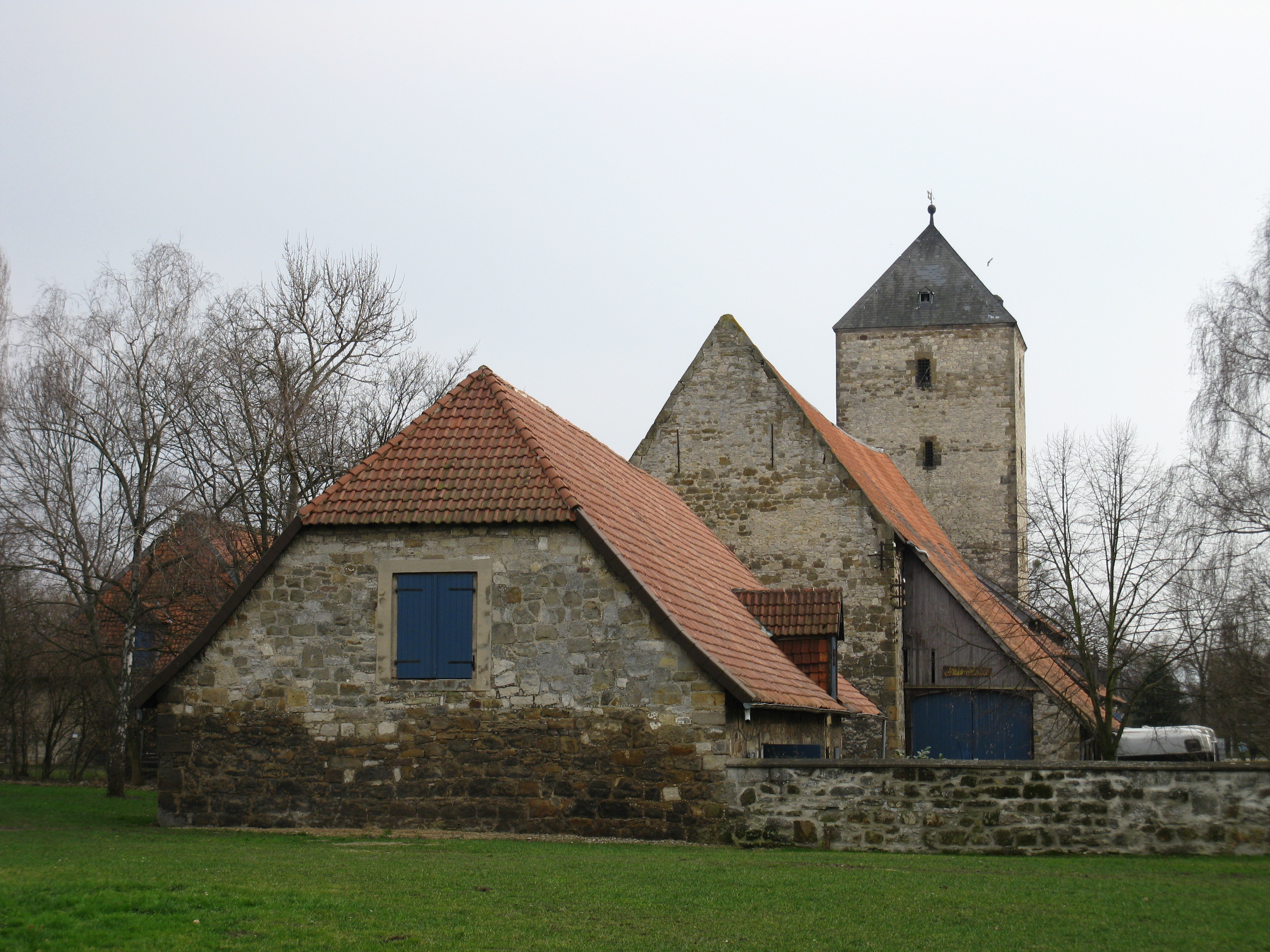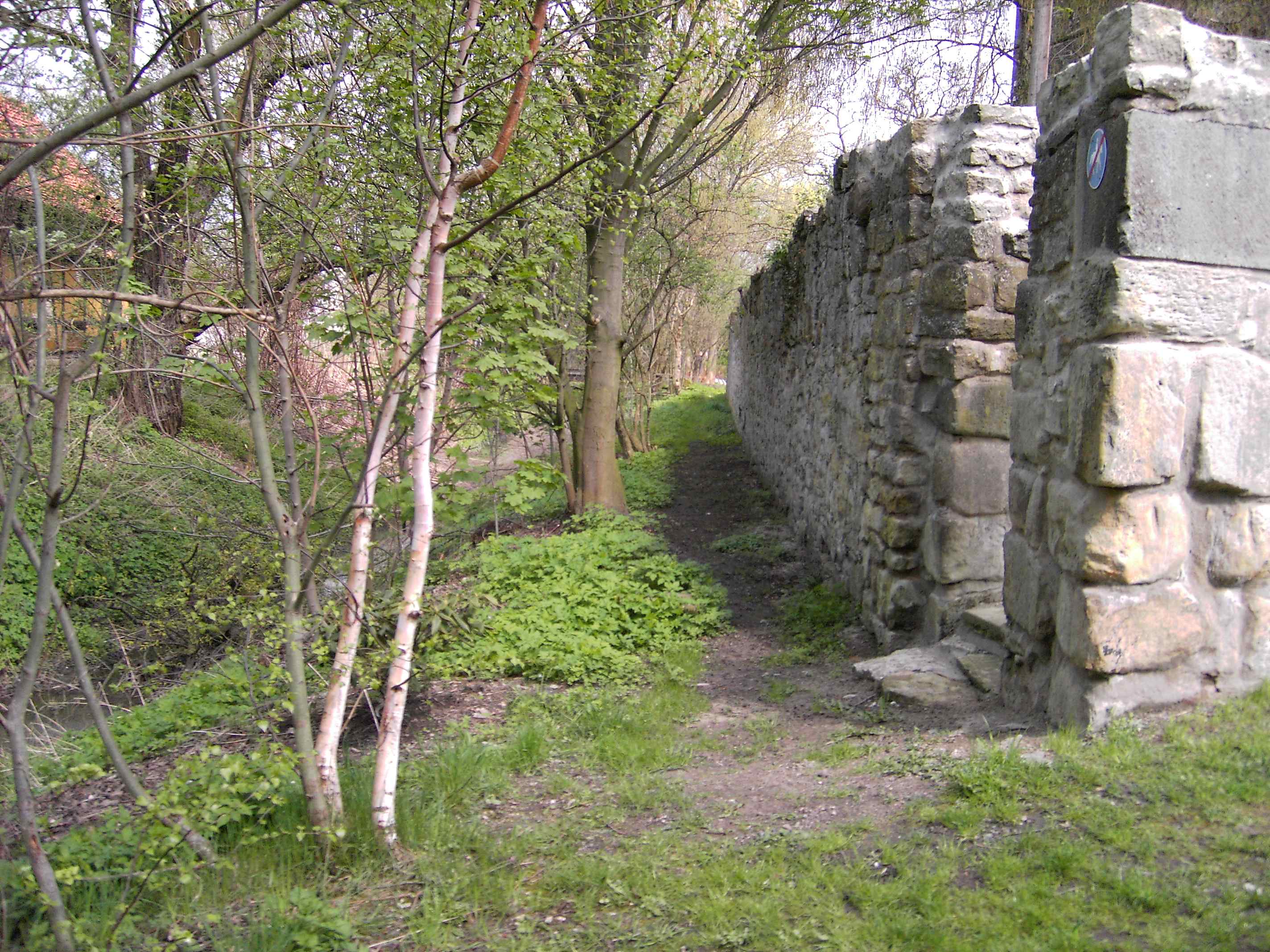Steuerwald Castle on:
[Wikipedia]
[Google]
[Amazon]




 Steuerwald Castle (''Burg Steuerwald'') is a Romanesque castle in
Steuerwald Castle (''Burg Steuerwald'') is a Romanesque castle in
 According to the orders given by Henry III, Steuerwald Castle was built in 1310–1313 near the river
According to the orders given by Henry III, Steuerwald Castle was built in 1310–1313 near the river




 Steuerwald Castle (''Burg Steuerwald'') is a Romanesque castle in
Steuerwald Castle (''Burg Steuerwald'') is a Romanesque castle in Hildesheim
Hildesheim (; nds, Hilmessen, Hilmssen; la, Hildesia) is a city in Lower Saxony, Germany with 101,693 inhabitants. It is in the district of Hildesheim, about southeast of Hanover on the banks of the Innerste River, a small tributary of the Lei ...
, a city in Lower Saxony
Lower Saxony (german: Niedersachsen ; nds, Neddersassen; stq, Läichsaksen) is a German state (') in northwestern Germany. It is the second-largest state by land area, with , and fourth-largest in population (8 million in 2021) among the 16 ...
, Germany
Germany,, officially the Federal Republic of Germany, is a country in Central Europe. It is the second most populous country in Europe after Russia, and the most populous member state of the European Union. Germany is situated betwe ...
.
The castle is currently used by a private riding club and is not open to the public. There are plans to convert the castle into a cultural centre and to use it for exhibitions and concerts afterwards. The roofs of the Romanesque palace and of several other buildings were renovated in 2010.
History
Hildesheim was founded as the seat of theBishopric of Hildesheim
The Prince-Bishopric of Hildesheim (german: Hochstift Hildesheim, Fürstbistum Hildesheim, Bistum Hildesheim) was an Hochstift, ecclesiastical principality of the Holy Roman Empire from the Middle Ages until its dissolution in 1803. The Prince-Bis ...
in 815. The settlement around the cathedral of Hildesheim was ruled by the clergy for four centuries and it quickly developed into a town which was awarded market rights
A market town is a settlement most common in Europe that obtained by custom or royal charter, in the Middle Ages, a market right, which allowed it to host a regular market; this distinguished it from a village or city. In Britain, small rural ...
by King Otto III in 983. The town grew further and obtained city rights
Town privileges or borough rights were important features of European towns during most of the second millennium. The city law customary in Central Europe probably dates back to Italian models, which in turn were oriented towards the tradition ...
in 1249, developing into a very wealthy merchant city. At the end of the 13th century, Hildesheim had about 5,000 inhabitants and was one of the biggest and richest cities in the North of Germany. The citizens gained more and more self-confidence and did not want to be governed by the bishop any longer. As the bishop did not want to reside in the rebellious and dangerous city any more, he ordered Steuerwald Castle in the North of the city to be built as a new residence. When the castle was completed in 1313, he left Hildesheim. The bishops of Hildesheim resided in Steuerwald Castle until 1763. Then a bishop's palace was built in the centre of the city opposite the cathedral.
 According to the orders given by Henry III, Steuerwald Castle was built in 1310–1313 near the river
According to the orders given by Henry III, Steuerwald Castle was built in 1310–1313 near the river Innerste
The Innerste is a river in Lower Saxony, Germany. It is a right tributary of the Leine river and in length.
Origin of the name
The river name is not related to the German word ''innerste'' meaning innermost. ''Innerste'', in earlier times c ...
in the North of Hildesheim, about 3 kilometres from the city The Castle was surrounded by a rampart with a moat. Bishop Otto II (1319–31), successor of Henry III, ordered the castle to be enlarged. The tall castle keep was built in 1325. In the Thirty Years' War
The Thirty Years' War was one of the longest and most destructive conflicts in European history
The history of Europe is traditionally divided into four time periods: prehistoric Europe (prior to about 800 BC), classical antiquity (80 ...
, Steuerwald Castle was enlarged again in 1622 under bishop Ferdinand of Bavaria. Then it was besieged several times and conquered on 4 June 1632, but only slightly damaged. After the Thirty Years' War had come to an end in 1648, the bishops of Hildesheim continued residing in Steuerwald Castle. Bishop Clemens August of Bavaria
Clemens August of Bavaria (german: Clemens August von Bayern) (17 August 1700 – 6 February 1761) was a member of the Wittelsbach dynasty of Bavaria and Archbishop-Elector of Cologne.
Biography
Clemens August (Clementus Augustus) was born in B ...
ordered a part of the castle to be remodelled in 1728 once more. During the secularization
In sociology, secularization (or secularisation) is the transformation of a society from close identification with religious values and institutions toward non-religious values and secular institutions. The ''secularization thesis'' expresses the ...
, the Catholic Church lost the castle in 1803. It was transformed into a government-owned domain, and some buildings which had deep cellars were used as a brewery. Several barns and stables were built, and a part of the moat was levelled, as the space was needed for the construction of a tenant's house in 1819. The City of Hildesheim bought the castle on 1 September 1912 as most of its grounds were needed to construct an inland harbour and a canal.
The small village of ''Steuerwald'' developed around the castle on the river Innerste. At the beginning of the 20th century it had 231 inhabitants, of whom most were working in the domain. In 1912, the village of ''Steuerwald'' became a part of the city of Hildesheim. Most of the buildings of the village had to be torn down when the inland harbour of Hildesheim was built. The harbour was inaugurated in 1926.
During World War II
World War II or the Second World War, often abbreviated as WWII or WW2, was a world war that lasted from 1939 to 1945. It involved the vast majority of the world's countries—including all of the great powers—forming two opposin ...
, the roofs of the romanesque palace and of some of the barns received some damage, when a bomb exploded near Steuerwald during an air raid on Hanover
Hanover (; german: Hannover ; nds, Hannober) is the capital and largest city of the German state of Lower Saxony. Its 535,932 (2021) inhabitants make it the 13th-largest city in Germany as well as the fourth-largest city in Northern Germany ...
on 9 October 1943. After the war, Steuerwald Castle was used for residential purposes, as the city of Hildesheim had suffered severe bomb damage. In the 1970s, a race course was laid out behind the castle which has been used by a riding club since 1973.
Architecture
Steuerwald Castle has been remodelled and enlarged several times over the centuries, but the castle keep, the north and west aisles, a large barn and especially the romanesque palace, all dating from theLate Middle Ages
The Late Middle Ages or Late Medieval Period was the Periodization, period of European history lasting from AD 1300 to 1500. The Late Middle Ages followed the High Middle Ages and preceded the onset of the early modern period (and in much of Eur ...
, are well-preserved.
*In the west, a part of the moat and the old wall with firing slits is preserved. In the second half of the 18th century, a large half-timbered store house was built outside the castle; this is to be renovated.
*The castle keep reaching a height of 26 metres has a quadrate basis measuring 9.35 × 9.35 metres, firing slits and a tent roof. Due to its walls reaching a thickness of 2 metres it was used as a prison in former times. Originally there was a door in the basis of the keep which served as the main entrance to the castle. Today, the keep is surrounded by a stable which was built in 1819.
*The inner court measures 175 × 175 metres. The Romanesque ''palas
A ''palas'' () is a German term for the imposing or prestigious building of a medieval ''Pfalz'' or castle that contained the great hall. Such buildings appeared during the Romanesque period (11th to 13th century) and, according to Thompson, ...
'', reaching a height of 23.15 metres, was built of sandstone
Sandstone is a clastic sedimentary rock composed mainly of sand-sized (0.0625 to 2 mm) silicate grains. Sandstones comprise about 20–25% of all sedimentary rocks.
Most sandstone is composed of quartz or feldspar (both silicates) ...
at the beginning of the 14th century. Only the north and the west aisles are preserved. The palace has four floors and several gothic
Gothic or Gothics may refer to:
People and languages
*Goths or Gothic people, the ethnonym of a group of East Germanic tribes
**Gothic language, an extinct East Germanic language spoken by the Goths
**Crimean Gothic, the Gothic language spoken b ...
lancet windows
A lancet window is a tall, narrow window with a pointed arch at its top. It acquired the "lancet" name from its resemblance to a lance. Instances of this architectural element are typical of Gothic church edifices of the earliest period. Lancet ...
. On the third floor there is a great hall.Segers-Glocke, Gabriele: ''Baudenkmale in Niedersachsen, Band 14.1 – Hildesheim'', p. 278. Hameln 2007. The roof was renovated in 2010.
*In the inner court there is a large barn, built of sandstone dating to the 14th century.
*The Tenant's House is one of the buildings which were added later. It was built in 1819 with a flight of outdoor stairs.
*St. Magdalena's Chapel was built in a Romanesque style in 1310. In 1507 it was remodelled in a gothic style and an apse
In architecture, an apse (plural apses; from Latin 'arch, vault' from Ancient Greek 'arch'; sometimes written apsis, plural apsides) is a semicircular recess covered with a hemispherical vault or semi-dome, also known as an ''exedra''. In ...
with lancet windows was added. Above the entrance with a typical pointed arch there is a noteworthy sandstone relief
Relief is a sculptural method in which the sculpted pieces are bonded to a solid background of the same material. The term ''relief'' is from the Latin verb ''relevo'', to raise. To create a sculpture in relief is to give the impression that the ...
showing the coat of arms of bishop John IV who ordered the chapel to be remodelled. The chapel, which was renovated in 1990, has 55 seats and is used for concerts and weddings.
References
{{coord, 52, 10, 09, N, 9, 55, 39, E, region:DE-NI_type:landmark_source:kolossus-dewiki, display=title Buildings and structures completed in 1313 Castles in Lower Saxony Buildings and structures in Hildesheim Romanesque architecture in Germany